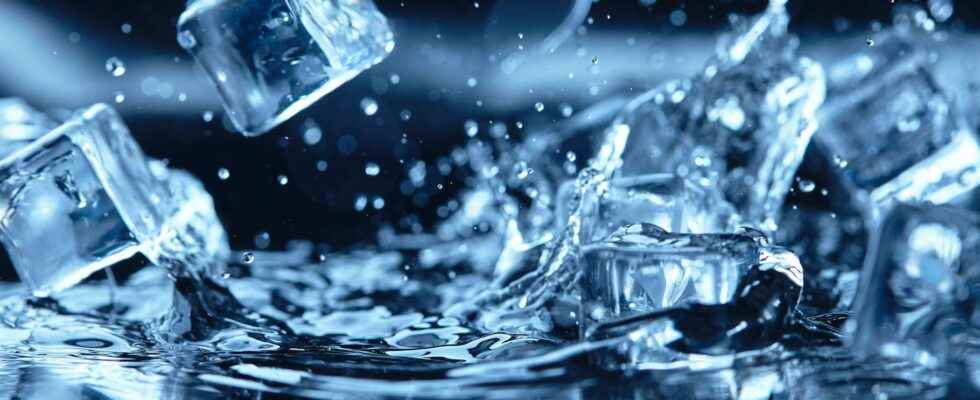The Leidenfrost effect. Does it ring a bell ? However, you have surely already observed it. When water droplets slide on a very hot pan. On closer inspection, they levitate on a cushion of steam. Well, physicists tell us today that the effect can also be obtained with ice. Provided you heat the pan a little more, all the same.
Somewhere between elementary school and middle school, we all learned that water can come in three forms – which correspond to three states:
- ice, which corresponds to the state solid some water ;
- water, which of course corresponds to its state liquid ;
- steam, which corresponds to thegaseous state some water.
We have also learned that to switch from ice to water and then to steam, it suffices, for example, to heat the water. On the other hand, it is more probably everyday life that has shown us that drops of water projected on an extremely hot frying pan do not come to a boil. Instead, they begin to glide over the surface. This strange property of water was first observed in 1751 by the German physician Johann Leidenfrost.
When the temperature exceeds the point called since Leidenfrost – about 150°C, concerning water -, in fact, a kind of cushion of vapor is created between the drop and the hot surface. So that the drop seems to levitate above the surface. It also works with other liquids. Like oil or alcohol. But with different Leidenfrost temperatures for everyone. And nearly 300 years later, Virginia Polytechnic Institute and State University physicists (Virginia Tech, USA) wanted to test the possibility of levitating ice in the same way, obtaining a sort of three-phase Leidenfrost effect, with water in its solid, liquid and gaseous forms.
The researchers first observed that, placed above a plate ofaluminum heated to 150°C, ice does not levitate like liquid water does. The melt water continues to boil on contact with the surface. Until a much higher temperature of around 550°C is reached. Why ? It would all be a matter of temperature differential. The physicists indeed explain that the layer of melting water which remains in contact with the ice remains around 0°C, even if the layer in contact with the aluminum rises to 100°C. Maintaining such a differential consumes much of the heat from the surface, hence a levitation more difficult to obtain.
Many applications in sight
Disappointing, from a visual effect point of view. But rather interesting from a practical point of view. Because experience proves that ice is able, in a way, to suppress the Leidenfrost effect – up to a certain temperature in any case. And in doing so, allow more efficient heat transfers than liquid water. Thanks to a window higher boiling point.
Among the applications of this discovery envisaged by the researchers, more efficient cooling systems for serverscomputers or for the engines of cars. Ice could also be extremely effective and easy to deploy for emergency cooling of nuclear center . Or again, in the shaping industry of metalswhich requires rapid cooling so as not to become brittle. Another area in which the work of physicists could have an impact: the Fight against fires. It could indeed become interesting to replace the traditional water lances of firefighters with ice cube lances.
The researchers even suggest that rough ice cubes could suppress the Leidenfrost effect even longer than the smooth ice disk they used for their experiments. There is no doubt that other application ideas will still come to the engineers. Provided that like the physicists of Virginia Tech, they are curious and creative in their work.
Interested in what you just read?
